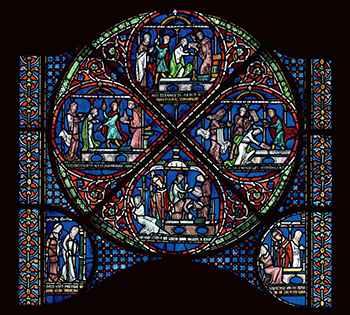BITE-SIZED HISTORY
Published in Issue 3 (May/June 2021), Volume 29BY TONY CANAVAN
Cultural vandalism vs city living
In a surprising move, Minister for the Environment Eamon Ryan has defended the ESB’s proposal to convert the Georgian House Museum in Dublin into luxury apartments. The minister has said that the project ‘has the potential to become an exemplar scheme for Dublin to demonstrate successful city living’. The house at 29 Fitzwilliam Street is one of eleven Georgian buildings planned for conversion—eight for residential use—in the company’s proposed redevelopment of its headquarters. Both the Irish Georgian Society and People Before Profit TD Bríd Smith are opposed to the plan. Ms Smith described the proposal as cultural ‘vandalism’. The building was restored by the ESB in 1988 as part of a deal with the then Dublin Corporation to allow it to exceed standard plot ratios in its expansion of its office complex, originally built in the 1960s when sixteen Georgian houses were demolished. The museum was temporarily closed in 2017 to facilitate the demolition of the old headquarters and the construction of new offices. The new building is almost completed but the ESB does not intend to reopen the museum. It appears to justify its decision on the grounds that there are enough ‘museum/heritage alternatives now available’, so the museum won’t be missed. Dublin City Council, however, has sided with the conservationists and voted down the ESB proposal.
‘Turbulent priest’ celebrated in new exhibition

Above: Detail from one of Canterbury Cathedral’s 6m-high ‘miracle’ windows, created in the early 1200s, now on display in the British Museum’s ‘Thomas Becket: Murder and the Making of a Saint’ exhibition.
A new exhibition at the British Museum explores the life, death and legacy of St Thomas Becket, who was murdered by four of King Henry II’s knights in 1170. ‘Thomas Becket: Murder and the Making of a Saint’ was originally intended to mark the 850th anniversary of Becket’s assassination in the crypt of Canterbury Cathedral. Its centrepiece is a stained-glass window from the cathedral. The 6m-high window, originally one of twelve ‘miracle’ windows created in the early 1200s, has never before left the cathedral nor been seen at eye level by the public. The exhibition also includes reliquaries, pilgrims’ souvenirs, illuminated manuscripts, sculpture, jewellery and a wax impression of Becket’s personal seal. Some are rare loans from institutions across the UK and Europe, brought together for the first time. The murder of Thomas Becket is relevant to Irish history, as Henry II attempted to rebuild bridges with the pope by going to Ireland, ostensibly to enforce the papal bull Laudabiliter, calling for reform of the Church here.
Charles Stewart Paisley?
A recent Zoom appearance by Ian Paisley MP caused a stir when someone spotted that he had a caricature of Charles Stewart Parnell hanging on the wall behind him. Mr Paisley was speaking from his Ballymena constituency office, where his wall is adorned with prints of leading figures from pre-partition Anglo-Irish politics. It is unusual that Mr Paisley, a Democratic Unionist MP, should include the nationalist leader who is credited as the ‘man who most gave Ireland the sense of being an independent nation’. The MP has described Charles Stewart Parnell, the leader of the Irish Parliamentary Party, as among the ‘most interesting and formative people’ in nineteenth-century Anglo-Irish politics. Perhaps, however, we should not read too much into this, as the Parnell drawing was one among a collection of caricatures of political, religious and sports figures that he acquired 30 years ago. Also in the collection are sketches of James Craig, Northern Ireland’s first prime minister; Edward Carson, leader of the anti-Home Rule movement; and even Keir Hardie, founder of the British Labour Party.
‘Troubles’ archive saved
The future and staffing of CAIN—Conflict Archive on the Internet—was in doubt but the project has been saved thanks to Initiatives for Change, an international charity, and the Department of Foreign Affairs Reconciliation Fund. CAIN, based at the University of Ulster’s Magee campus in Derry, covers the history, key events and political issues of the Troubles since 1968. The new funding means that the archive will be retained and expanded and that its three staff will be paid. The archive has been freely available on the internet since 1997, with new material continually added. It contains thousands of documents, photographs and articles, and is widely used by academics and researchers. The new funding will ensure the future of the archive. The University of Ulster is also investing in technology that will enhance the experience for all those using the platform.


















